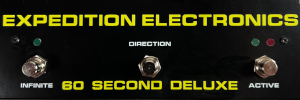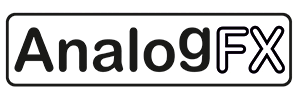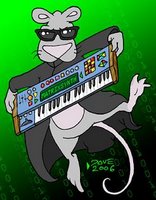Showing posts sorted by relevance for query Astronauta Pinguim interview. Sort by date Show all posts
Showing posts sorted by relevance for query Astronauta Pinguim interview. Sort by date Show all posts
Tuesday, October 08, 2013
An Interview with Bruno Spoerri on Astronauta Pinguim
Update: in case you read this post when it first went up, be sure to give it another look for a few updates. It's a bit convoluted with quite a few tangents, but that's how it goes sometimes.
Read the full interview on Astronauta Pinguim here.
The following are some excerpts and tie-ins to other bits of synth history.
-----
Initially a saxophone player, Bruno Spoerri explored electronic music in the 1960s on.
"In 1964 he was invited to a job in an advertising agency and began to work with electronic music using a Ondes Martenot and, after, using lots of synthesizers and also experimenting with electrified/synthesized saxophones..." "As a saxophonist and jazz improviser I always looked for ways to play without a keyboard."
Pictured above is Bruno with his EMS Synthi 100 (videos previously posted here and here).
On the Synthi 100: "I bought the Synthi 100 in 1971. In 1987 I gave it to Felix Visser (Synton) in exchange for a Fairlight CMI; some years he had to sell it at an auction, and I don't know where it is now (I would recognize the instrument, as I did some small changes on it)." It was listed on Vemia back in 2009 posted here and here. Click though for pics.
In 1974, he recorded the album 'Iischalte (Switched-on Switzerland)'.
Bruno Spoerri - Le Ranz Des Vaches
Uploaded on Jul 25, 2011 Aura Archange Maudit·57 videos
"Bruno Spoerri - Iischalte (Switched-on Switzerland)
1974
Imágenes de la película La lunga notte di Veronique (1966)
http://www.imdb.com/title/tt0183441/
Video made by Aura Archange Maudit"
-----
"On 'Voice Of Taurus' (1978), Bruno Spoerri experiments a lot with electrified wind instruments and also with jazz-rock and rock."
Bruno Spoerri - Hymn Of Taurus (Taurus Is Calling You!)
Mental Groove, MPD & WRWTFWW.
"First track of Bruno Spoerri's 'Voice Of Taurus'
1978 Gold Records, Switzerland
Cat# 11 061 (Vinyl, LP)
Bruno Spoerri on 'Hymn Of Taurus':
"The rhythm track was created with my very first primitive ring modulator (4 diodes and 2 transformers) that is why it is so dirty The voice went of course through the EMS vocoder, the choir was created through the VAKO Orchestron."
-----
Again, don't miss the full interview with Bruno Spoerri on Astronauta Pinguim here. There's some fascinating history there including Ginette Martenot and the Ondes Martenot, Oskar Sala with his Mixturtrautonium, and Joel Chadabe. Regarding his original gear, "most of my analog gear is sold (most of it to the remarkable Swiss Synthorama of Martin Hollinger), but I still have my first synthi, the EMS VCS-3 (from 1970), the ARP 2600 with sequencer and the Lyricon I and II. I use the lyricon quite often in performances, the other gear mostly for demonstrations to visitors."
I was fortunate enough to visit Synthorama back in 2008. You can find my pics and videos from the visit here. See the Synthorama label for other posts including a one of a kind modular, the Airböurne, created by the curator of the museum, Martin Hollinger.
For more posts featuring Bruno click here and scroll. Check him out on the Synthophone and Gesture Based Synthesis here.
via Fabricio Carvalho aka Astronauta Pinguim on The MATRIXSYNTH Lounge
You can find links to additional interviews with synth history's early influentials by Astronauta Pinguim here.
LABELS/MORE:
Alternate Controllers,
EMS,
Featured,
Interviews,
Mixturtrautonium,
Ondes Martenot,
Synthophone,
synthorama,
Vako,
Video
Saturday, September 14, 2013
An Interview with Joel Chadabe on Astronauta Pinguim
via Astronauta Pinguim where you'll find the full interview.
"Joel Chadabe, native of New York, studied with Elliott Carter at the Yale School of Music. Following three years in Europe, he returned to New York and established an electronic music studio at the State University of New York at Albany.
In 1967, he created the design for an analog-programmable Moog synthesizer and commissioned Robert Moog to build it. In 1977, Joel Chadabe and Roger Meyers developed the PLAY Program, the first software music sequencer. From 1983 to 1994, Joel Chadabe was the president of Intelligent Music, the first company to develop and distribute software and hardware for interactive composing, In 1994, he founded Electronic Music Foundation (EMF), a non-profit organization dedicated to the history and creative potential of electronic music. In 2006, he founded Ear To The Earth, a worldwide network for environmental sound..."
via Fabricio Carvalho aka Astronauta Pinguim on The MATRIXSYNTH Lounge
After checking out the interview with Joel Chadabe, click here and scroll for other interviews with synth legends on Astronauta Pinguim.
Sunday, December 01, 2013
Halim El-Dabh - Pest Control, Tape Manipulation & The RCA Synthesizer
Astronauta Pinguim has published yet another interview with one of the pioneers of electronic music. This time around we have an interview with Halim El-Dabh (Portuguese version here). It is a fascinating read. He was the first person to create a musical composition using tape manipulation, and the source of his inspiration came from his work in agriculture.
"'My first exposure to electronic sound devices was back in 1943. As an agriculturist studying pest control, I wanted to see if sound-emitting devices could control tiny beetles that attack wheat, corn, alfalfa and beans. I thought that rather than getting rid of the beetles, we could distract them. I used to experiment with clanging together iron rods like bells; then I tried scratching the rods together to see if it discouraged the bugs.'"
"In 1944 Halim decided to record the ceremony of the Zaar (a female religious ceremony), he then treated the recordings he made on the ceremony using studio techniques and electronic devices and voilà, the first piece of tape manipulation in the world was born! (Note that it happened four years before Pierre Schaeffer released his first published works in France). The Expression Of The Zaar was Halim's only piece to be published from this period, but he created another pieces of tape manipulation mostly of street vendors in Cairo."
In essence, this was the birth of musique concrete.
On The RCA Synthesizer: "'The synthesizer was an innovation that gave us a larger expansion of sound manipulation. We used punch cards to input and receive sound from the machine. It took up a whole wall, it was huge. We were able to get very clear sounds of whatever we synthesized whether it was trumpet, violin or any other sound. I especially liked to input my voice. Luening did an input of his piccolo to transform it. I did an input of my drum to transform it and then took the sounds back from the synthesizer.'"
Be sure to read the full interview on Astronauta Pinguim here. You can find links to additional interviews on Astronauta Pinguim here.
via Fabricio Carvalho aka Astronauta Pinguim on The MATRIXSYNTH Lounge
"'My first exposure to electronic sound devices was back in 1943. As an agriculturist studying pest control, I wanted to see if sound-emitting devices could control tiny beetles that attack wheat, corn, alfalfa and beans. I thought that rather than getting rid of the beetles, we could distract them. I used to experiment with clanging together iron rods like bells; then I tried scratching the rods together to see if it discouraged the bugs.'"
"In 1944 Halim decided to record the ceremony of the Zaar (a female religious ceremony), he then treated the recordings he made on the ceremony using studio techniques and electronic devices and voilà, the first piece of tape manipulation in the world was born! (Note that it happened four years before Pierre Schaeffer released his first published works in France). The Expression Of The Zaar was Halim's only piece to be published from this period, but he created another pieces of tape manipulation mostly of street vendors in Cairo."
In essence, this was the birth of musique concrete.
On The RCA Synthesizer: "'The synthesizer was an innovation that gave us a larger expansion of sound manipulation. We used punch cards to input and receive sound from the machine. It took up a whole wall, it was huge. We were able to get very clear sounds of whatever we synthesized whether it was trumpet, violin or any other sound. I especially liked to input my voice. Luening did an input of his piccolo to transform it. I did an input of my drum to transform it and then took the sounds back from the synthesizer.'"
Be sure to read the full interview on Astronauta Pinguim here. You can find links to additional interviews on Astronauta Pinguim here.
via Fabricio Carvalho aka Astronauta Pinguim on The MATRIXSYNTH Lounge
Monday, April 16, 2012
Herb Deutsch Interview on Astronauta Pinguim
 "In 1963 Herb Deutsch met Robert Arthur Moog at a conference of the NYSSMA (New York State School Music Association) in Rochester, NY. The year before, Herb had built a Melodia model theremin, from an article written by Robert Moog on “Electronics World” magazine, in which Bob explained step by step how to assemble the theremin and this was the initial subject of conversation between them.The ideas evolved very quickly, and they decided to work together in a project to build a sound synthesizer, based on the principles of voltage controlled that were already being developed by Bob. In 1964 they designed and assembled the first prototype of the Moog synthesizer and, among other things, it was Herb who insisted on the idea of using a keyboard similar to a piano, because it would be more practical to composers and it would also help to increase the sales of the new instrument."
"In 1963 Herb Deutsch met Robert Arthur Moog at a conference of the NYSSMA (New York State School Music Association) in Rochester, NY. The year before, Herb had built a Melodia model theremin, from an article written by Robert Moog on “Electronics World” magazine, in which Bob explained step by step how to assemble the theremin and this was the initial subject of conversation between them.The ideas evolved very quickly, and they decided to work together in a project to build a sound synthesizer, based on the principles of voltage controlled that were already being developed by Bob. In 1964 they designed and assembled the first prototype of the Moog synthesizer and, among other things, it was Herb who insisted on the idea of using a keyboard similar to a piano, because it would be more practical to composers and it would also help to increase the sales of the new instrument."You'll find the full interview on Astronauta Pinguim
via Fabricio Carvalho aka Astronauta Pinguim on The MATRIXSYNTH Lounge
Update: Just spotted the following video linked in the interview and realized I hadn't posted it before. You'll notice the tuning on the Mini is a off. He mentions it at the 2:00 mark. This is Minimoog #94.
From Moog to Mac: A Special Concert by Herb Deutsch
YouTube Uploaded by NYUGallatin on Jul 20, 2011
"Presented on April 15, 2011 by the Gallatin School of Individualized Study at New York University."
Also see:
The Mini Moog Synthesizer with Herb Deutsch - History of the Minimoog
Friday, November 01, 2013
An Interview with Rick Wakeman on Astronauta Pinguim
Full interview on Astronauta Pinguim
"How many Minimoog model D synthesizers did you have during all your career and how many of those Minimoogs do you still have? Can you tell us a little bit about the history of your Minimoogs?
RICK - I don't know the exact answer, but I think I have probably owned about 20 Minimoogs in my lifetime. I currently have 9. Finding good ones is extremely difficult. I have a very good man who repairs them for me and keeps them in good order. I cannot even imagine not having one. I have bought them for many different countries, and one from Switzerland which amazingly I used to own back in the early seventies!"
via Fabricio Carvalho aka Astronauta Pinguim on The MATRIXSYNTH Lounge
Friday, August 30, 2013
Interview with Udo Hanten on Astronauta Pinguim
via Astronauta Pinguim where you'll find the full interview and tons of pics.
"Udo Hanten was born in Krefeld (North Rhine Westfalia, Germany), in 1956. His first instrument was an acoustic guitar, but it was the electronic possibilities that Udo could achieve with that guitar plus a pickup, a tube radio, a spring reverb and a reel to reel recorder that led him choose his career as an electronic musician and producer later on. In the late '60s he started in music, in late '70s he started to work with audio performances and installations, in the early '80s he started to work with video and in the mid-'80s he started with Laserworks. Udo is in the business with all those art forms since then!..."
via Fabricio Carvalho aka Astronauta Pinguim on The MATRIXSYNTH Lounge
"Udo Hanten was born in Krefeld (North Rhine Westfalia, Germany), in 1956. His first instrument was an acoustic guitar, but it was the electronic possibilities that Udo could achieve with that guitar plus a pickup, a tube radio, a spring reverb and a reel to reel recorder that led him choose his career as an electronic musician and producer later on. In the late '60s he started in music, in late '70s he started to work with audio performances and installations, in the early '80s he started to work with video and in the mid-'80s he started with Laserworks. Udo is in the business with all those art forms since then!..."
via Fabricio Carvalho aka Astronauta Pinguim on The MATRIXSYNTH Lounge
Thursday, November 15, 2012
An Interview Tim Blake by Astronauta Pinguim
Timothy Blake of Gong and Hawkwind. Check out his double EMS Synthi system and Moog System 55. On his relationship with EMS:
 "My EMS relations were mostly with Robin Woob (now the owner) and the technical people, Graham Wood, Graham Hinton, with whom most of the unique modifications to my set-up were designed.
"My EMS relations were mostly with Robin Woob (now the owner) and the technical people, Graham Wood, Graham Hinton, with whom most of the unique modifications to my set-up were designed.
I've met Zinovieff, of course, but not Cockerell or Cary. Peter seemed to look down on those who played the EMS synths, regarding them as toys he sold to finance his huge computer music studio. I have never heard a note of his music!!
I believe I once impressed Peter at an EMS lunch, by enjoying his Cheese with very hottest oh his home-made chutneys!! Strange stuff, Electronic musicians!"
Read the full interview on Astronauta Pinguim here.
via Fabricio Carvalho of Astronauta Pinguim on The MATRIXSYNTH Lounge
 "My EMS relations were mostly with Robin Woob (now the owner) and the technical people, Graham Wood, Graham Hinton, with whom most of the unique modifications to my set-up were designed.
"My EMS relations were mostly with Robin Woob (now the owner) and the technical people, Graham Wood, Graham Hinton, with whom most of the unique modifications to my set-up were designed.I've met Zinovieff, of course, but not Cockerell or Cary. Peter seemed to look down on those who played the EMS synths, regarding them as toys he sold to finance his huge computer music studio. I have never heard a note of his music!!
I believe I once impressed Peter at an EMS lunch, by enjoying his Cheese with very hottest oh his home-made chutneys!! Strange stuff, Electronic musicians!"
Read the full interview on Astronauta Pinguim here.
via Fabricio Carvalho of Astronauta Pinguim on The MATRIXSYNTH Lounge
Wednesday, May 23, 2012
Astronauta Pinguim with Moog Tattoo & MATRIXSYNTH T

via Fabricio Carvalho on Facebook
Be sure to catch the Astronauta Pinguim interview with Gershon Kingsley.
MATRIXSYNTH Ts
Sunday, July 13, 2014
An Interview with Klaus Schulze on Astronauta Pinguim
You'll find the full interview on Astronauta Pinguim here.
Pictured: Brussels, 1976 © Klaus D. Mueller
Excerpt from the interview:
"ASTRONAUTA - What was your favorite synthesizer in the '70s? And, looking back, what is (or remained as) your favorite synthesizer from the '70s, nowadays?
KLAUS SCHULZE - I always liked the instruments that had a special sound: the 'Minimoog' oscillators have this great deep and full tone; the 'Farfisa Syntorchester' had this 'female solo singing voice' in the higher register, at least the instrument that I owned; the Moog modular system had the wonderful sequencer; the 'Yamaha CS 80' had this and the 'EMS Synthi A' had that... I used every instrument for a certain & special part to create the sounds of my music that I needed and wanted. Also not unimportant were the effect tools and the method I made use of them: echo, repeat, flanger, phase shifter, etc. and not to forget: the recording and mixing technique: building 'rooms', left, right, back, front... (besides all the musical techniques of composing a piece of music, with intro, various parts, tension, breaks, chaos and beauty, rhythm and calmness, repetition, sounds, melodies, surprises, etc, etc, etc...)"
Pictured: Brussels, 1976 © Klaus D. Mueller
Excerpt from the interview:
"ASTRONAUTA - What was your favorite synthesizer in the '70s? And, looking back, what is (or remained as) your favorite synthesizer from the '70s, nowadays?
KLAUS SCHULZE - I always liked the instruments that had a special sound: the 'Minimoog' oscillators have this great deep and full tone; the 'Farfisa Syntorchester' had this 'female solo singing voice' in the higher register, at least the instrument that I owned; the Moog modular system had the wonderful sequencer; the 'Yamaha CS 80' had this and the 'EMS Synthi A' had that... I used every instrument for a certain & special part to create the sounds of my music that I needed and wanted. Also not unimportant were the effect tools and the method I made use of them: echo, repeat, flanger, phase shifter, etc. and not to forget: the recording and mixing technique: building 'rooms', left, right, back, front... (besides all the musical techniques of composing a piece of music, with intro, various parts, tension, breaks, chaos and beauty, rhythm and calmness, repetition, sounds, melodies, surprises, etc, etc, etc...)"
Saturday, December 08, 2012
An Interview with Bernie Krause on Astronauta Pinguim
Full interview on Astronauta Pinguim here.
Pictured: Bernie and the Moog synthesizer (photo by Jon Sievert)
"Since I do not see too well, my world is mostly informed by sound. So naturally, as a young child I gravitated to music studying violin and composition. When I became a teenager, I switched to guitar (when the hormones kicked in) because… well, you know. When I was in my 25th year I joined a very famous American folk group called The Weavers. After they broke up in early 1964, I moved to California from New York, and began to study electronic music at Mills College in Oakland, which was the leading institution for experimental techniques at the time. While there, I met Paul Beaver, who became my music partner, and together we helped introduce the Moog synthesizer to pop music and film on the West Coast and in the UK."
You can find links to more of Anstronauta Pinguim's interviews with the synth world's greats here.
via Fabricio Carvalho on The MATRIXSYNTH Lounge
Pictured: Bernie and the Moog synthesizer (photo by Jon Sievert)
"Since I do not see too well, my world is mostly informed by sound. So naturally, as a young child I gravitated to music studying violin and composition. When I became a teenager, I switched to guitar (when the hormones kicked in) because… well, you know. When I was in my 25th year I joined a very famous American folk group called The Weavers. After they broke up in early 1964, I moved to California from New York, and began to study electronic music at Mills College in Oakland, which was the leading institution for experimental techniques at the time. While there, I met Paul Beaver, who became my music partner, and together we helped introduce the Moog synthesizer to pop music and film on the West Coast and in the UK."
You can find links to more of Anstronauta Pinguim's interviews with the synth world's greats here.
via Fabricio Carvalho on The MATRIXSYNTH Lounge
Tuesday, May 22, 2012
An Interview on Gershon Kingsley with Reflections on Bob Moog
 Full interview on Astronauta Pinguim
Full interview on Astronauta Pinguim"ASTRONAUTA - Today (May 23) is the day we celebrate the birthday of Robert Moog. You had contact with him in the beginnings of the invention of the Moog synthesizer and also in the last days of his life, when you were interviewed by Hans Fjellestad to the "Moog" documentary. How did you meet Robert Moog and, in your point of view, what is Bob's greatest legacy?
GERSHON - I met him in 1969 up at his place in Trumansburg and after considerable time of learning this specialty of frequency modulation, I bought with my last money the synthesizer. Luckily, in a few weeks, I got my money back making a commercial for hair dryers.
Bob's greatest legacy is the probably the polyphonic synthesizer and further development of the Theremin..."
via @astroping
Update 5/23 4:23 PST: I'm finally getting around to reading the interview in full myself. If you hadn't had the chance yet, make a note or bookmark it for when you do. It's a great interview. You'll pick up lots of interesting bits of synth history. I never knew the following regarding Popcorn: "GERSHON - When it was first recorded and we didn't have a title, one of the musicians suggested 'Popcorn', but not because it sounded like popcorn, but "pop" for popular and 'corn' for kitsch. It came out like a Russian folk tune or a Bach invention originally.
To be honest, not much. However, I do like the Popcorn International I oversaw that was done with the Cologne Radio Orchestra, Popcorn Fantasie arranged by Benny Gebauer, and the M & H Band '80s version, Goodiepal (with the extra beats), the Crazy Frog version and the Swedish Chef Muppet version.
As a side remark, when I conducted in Japan in the early 80's, Yamaha invited me to their factory where I heard for the first time Popcorn as a sample in one of the Yamaha synthesizers."
Monday, June 30, 2014
An Interview with David Van Koevering on Astronauta Pinguim
via Fabricio Carvalho on The MATRIXSYNTH Lounge
 "David was one of the main [people] responsible for the Mini Moog becoming a very popular instrument in the early seventies, when he decided to travel thru the USA demonstrating and selling the instrument. David Van Koevering was also the developer of the Orchestron, an instrument that was based on Mattel's Optigan, that became very famous when musicians like Patrick Moraz and Kraftwerk members used in their records!"
"David was one of the main [people] responsible for the Mini Moog becoming a very popular instrument in the early seventies, when he decided to travel thru the USA demonstrating and selling the instrument. David Van Koevering was also the developer of the Orchestron, an instrument that was based on Mattel's Optigan, that became very famous when musicians like Patrick Moraz and Kraftwerk members used in their records!"You'll find the interview on Astronauta Pinguim here.
Pictured:
Top: "On stage: David Van Koevering (2nd from left) and Robert Moog (seated)."
"ASTRONAUTA - How did you meet Robert Moog for the first time?
DAVID - I was traveling and doing musical educational programs in the public schools. There is a picture of my educational presentation in Trevor Pinch's book "Analog Days". I saw an ad in the Music Educators Journal that had a photo of the R. A. Moog Studio in Trumansburg, NY which said "Come Visit Our Backroom". I was performing in the area and decided to visit. Bob Moog was in Europe so I did not meet him then. Awhile later I was performing at a school in Long Island, NY and the principal said "I want you to meet Bob Moog". He had come from Trumansburg, NY to meet me and see and hear my show. Bob and I talked about the last song on my show where I performed on a "Theremin". I had made it from and article that Bob had published in an electronics magazine. After meeting Bob that day he asked if I would like to join him and his family at Carnegie Hall in New York City. It was the first ever live performance of the "Moog Quartet" with Gershon Kingsley. During that concert something switched on in my spirit, I knew I needed to be involved! I had a huge audience and showing the future of music to the younger generation became my goal."
Left: David Van Koevering with Moog theremin.
www.davidvankoevering.com
Wednesday, October 01, 2014
And Interview with Ramon Sender on Astronauta Pinguim
Check out the full interview on Astronauta Pinguim here.
Excerpt:
"ASTRONAUTA - What are your memories about your first meeting with Don Buchla? And how did the arrival of the 'Buchla Box', in 1964, change the compositional process at the San Francisco Tape Music Center?
RAMON SENDER - We were in desperate need of a main mixing board, some pre-amps, etc, but also looking for someone who could designed our 'dream instrument' for us. Buchla came to one of our concerts - or perhaps answered an ad we ran in the newspaper.
Did the Buchla Box change the compositional process at our center? For Subotnick almost immediately. For Pauline more gradually, but more once the Center moved to Mills College and she took over as director. I was in the process of leaving the city when the Buchla first arrived, but then during the winter of 1967-68 I needed a job and Don allowed me to stuff circuit boards for him and live in his manufacturing warehouse. In the warehouse he had a complete Buchla studio set up and I spent happy hours there."
Wednesday, September 26, 2012
An Interview with Jon Appleton - One of the Creators of the NED Synclavier
via Astronauta Pinguim where you'll find the full interview.
"APPLETON - I have the first and the second Synclavier but I don't play them. I am not sure they work. Sydney and Cameron and I developed the instrument first from something called The Dartmouth Digital Synthesizer. It was my conception and their design..."
Check out the "all-star" pic below. You should recognize some of the names. Peter Zinovieff was he man behind EMS. Via Fabricio Carvalho on The MATRIXSYNTH Lounge
Astronauta Pinguim also brought us interviews with Vince Clark, Gershon Kingsley, Herb Deutsch, and Jean Jacques Perrey.
Remember you can find all interviews featured on the site via the Interviews label below.
Tuesday, January 29, 2013
An Interview with Paddy Kingsland of the BBC Radiophonic Workshop
You'll find the full interview on Astronauta Pinguim, including mentions of Delia Derbyshire & Daphne Oram.
BTW, today is Paddy Kingsland's birthday. Happy Birthday Mr. Kingsland! :)
Pictured: Paddy Kingsland and the EMS Synthi 100 (the Delaware)
"Patrick 'Paddy' Kingsland was born in Hampshire (England) on January 30th, 1947. He took piano lessons in his youth and got his first guitar when he was 15. By this time he also built his own valve amplifier and began to play in a band in his school days. After attending Eggars Grammar School in Alton, Hampshire, Paddy joined the BBC. He was a technician there until, in 1970, he had the chance to join the BBC Radiophonic Workshop, the famous department that was responsible for providing the soundtrack and sound effects to BBC radio and TV shows. Paddy worked there for 11 years and created the music for many programs, including "The Changes", "The Hitch-hiker's Guide to the Galaxy" and several episodes of 'Doctor Who'!
"In 1973, BBC Records released the album 'Fourth Dimenson'. Although it was credited to The BBC Radiophonic Workshop, "Fourth Dimension" is the first solo album released by Paddy Kingsland and includes tracks that he recorded from 1970 to 1973, using mainly the EMS synthesizers VCS3 and Synthi 100 (the Delaware)..."
You can still find the release on Amazon
The first synth to enter the BBC? "The first synthesizer arrived in 1970 - an EMS VCS3. It was great for learning about voltage control and making sounds, but no good for playing tunes on. The Arp Odyssey which came a bit later was much better for that."
via Fabricio Carvalho aka Astronauta Pinguim on the MATRIXSYNTH Lounge. You can find interviews with other synth legends on his site or via the Interviews label below.
Thursday, January 23, 2014
An Interview with Paul Bley on Astronauta Pinguim
"In the second half of the '60s, Paul Bley became interested in synthesizers, being one of the first to take a Moog Modular Synthesizer System onstage at the Phillarmonic Hall in New York, on December 26th 1969. His experiments with electronics and synthesizers led to the release of some great 'electronic improvising' albums, from 1969 to 1972, including 'Revenge: The Bigger The Love The Greater The Hate' (1971, credited to Bley-Peacock Synthesizer Show), 'Improvisie' (1971, credited to Paul Bley) and 'The Paul Bley Synthesizer Show' (1971, credited to The Paul Bley Synthesizer Show). It's amazing the experiments that Paul Bley and Annette Peacock made with electronics, passing her voice through the synthesizers on several tracks from this period! Paul Bley also used an ARP 2500 synthesizer during this time."
Read the full interview on Astronauta Pinguim here.
via Fabricio on The MATRIXSYNTH Lounge
Read the full interview on Astronauta Pinguim here.
via Fabricio on The MATRIXSYNTH Lounge
Thursday, November 20, 2014
An Interview with Andrew Rudin on Astronauta Pinguim
Read the full interview on Astronauta Pinguim
"In 1967 Nonesuch Records, a record company specialized in releasing inexpensive classical music records, became interested in having electronic music in their catalogue. First, they released Morton Subotnick's 'Silver Apples of the Moon,' Kenneth Gaburo's 'Music For Voices, Instruments & Electronic Sounds,' and Beaver & Krause's 'The Nonesuch Guide to Electronic Music,' and then, via a recommendation from Robert Moog, Nonesuch became aware of Andrew Rudin's electronic works and commissioned a full-LP composition. In 1968 'Tragoedia - A Composition in Four Movements for Electronic Music Synthesizer,' a piece composed between October 1967 and April 1968 was released, using instruments designed by Robert Moog. Some excerpts from 'Tragoedia' were used by Italian director Frederico Fellini in his 1969 film 'Satyricon.' Andrew Rudin realized a second work for film and synthesized sounds, 'Paideia,' and continued to compose for ensembles and dance companies."
Wednesday, August 01, 2012
An Interview with Vince Clarke on Astronauta Pinguim
 On his massive synth collection:
On his massive synth collection:"I think I seriously started collecting synths in the early 90's. And then, having run out of space, I stopped. I realized, the only keyboards worth owning were the one's that would be useful to my music making process, and that is still true today. I try to incorporate as many different synths as possible into my music, rather than favor one particular keyboard over another."
Read the full interview with additional pics on Astronauta Pinguim here.
via Fabricio Carvalho on The MATRIXSYNTH Lounge
Sunday, March 03, 2013
Astronauta Pinguim: An Interview with Larry Fast
 "Lawrence Roger Fast was born in Newark, New Jersey (USA) on December 10th, 1951. Since his childhood Larry was very interested in music and electronics. He started to build early electronic circuits about 1966 and his first contact with the Moog modular synthesizers was on 1968. Some of his own designed devices started to be sold on commission on late 1971. Larry attended Lafayette College in Pennsylvania, where he obtained a degree in history in 1973.
"Lawrence Roger Fast was born in Newark, New Jersey (USA) on December 10th, 1951. Since his childhood Larry was very interested in music and electronics. He started to build early electronic circuits about 1966 and his first contact with the Moog modular synthesizers was on 1968. Some of his own designed devices started to be sold on commission on late 1971. Larry attended Lafayette College in Pennsylvania, where he obtained a degree in history in 1973.In the early '70s, Larry Fast had the opportunity to meet Rick Wakeman, who played with the famous progressive rock band Yes at that time and asked Larry to build some synthesizer modules to him. It was just before Yes recorded their live album "Yessongs" (recorded in 1972 and released in 1973) and Rick Wakeman used the modules built by Larry on this album. In June of 1973 Larry went to England to give minor technical support to Rick Wakeman on Yes' album "Tales From Topographic Oceans" while circulating his own music demos to labels in London.
In 1975, Larry released "Electronic Realizations for Rock Orchestra", the first album from his solo project - Synergy - and in the same year he collaborated with the British-German band Nektar on an album ("Recycled", 1975) and the subsequent tour. In 1976 the second Synergy album, "Sequencer" was released (Larry is finishing the artwork to re-release "Sequencer" remastered from the original analog mix tapes in 24 bit 192 khz audio and digipak format right now!). Also in 1976 he was invited to play the keyboards with Peter Gabriel, who had recently left Genesis to become one of the world's most creative and famous artists. Larry played with Peter Gabriel for 10 years (from 1976 to 1986) and recorded 8 albums (in part or whole) with him: PG1, PG2, PG3, PG4, Plays Live, Birdy soundtrack, tracks on Shaking the Tree and So.
During the period that Larry was the keyboard player of Peter Gabriel's band, he found time to consult with Moog to develop at least two very famous synthesizers, the Polymoog (1976) and the Memorymoog (1982) and also kept his Synergy project, releasing 6 albums more: "Cords" (1978), "Games" (1979), "Audion"(1981), "Computer Experiments, Volume One" (1981), "The Jupiter Menace Soundtrack" (1982) and "Semi-Conductor" (1984). In the late '80s he worked as the A&R coordinator and executive producer for The Audion Record Company, the legendary electronic music label and released "Metropolitan Suite" (1987). In 1998 Semi-Conductor Release 2 was released with a lot of bonus tracks and in 2002 "Reconstructed Artifacts", an album containing digital re-recordings of previous Synergy tracks, was released. Most of Larry's Synergy albums were re-released in various editions, some of them with bonus tracks!"
 You'll find the full interview on Astronauta Pinguim.
You'll find the full interview on Astronauta Pinguim.via Fabricio Carvalho on The MATRIXSYNTH Lounge
Sunday, February 10, 2013
An Interview with David Borden - The Early Days of Moog
"In the late '50s he attended the Eastman School of Music, in Rochester (NY) and it was during this time that he discovered the electronic music of Otto Luening, the man who founded the Columbia-Princeton Center for Electronic Music with Vladimir Ussachevsky. This interest in electronic music eventually led David to meet Robert Moog in 1967 and - two years later - to found the first all synthesizer ensemble, Mother Mallard Portable Masterpiece Co. In the early years, Mother Mallard used monophonic modular Moog synthesizers and was the first live act to take the Minimoog on stage - when it was still being developed - in May, 1970. Mother Mallard recorded some great pieces that still sound fresh and modern nowadays!"
via Astronauta Pinguim where you'll find the full interview. You'll find links to additional interviews by Astronauta Pinguim here.
via Astronauta Pinguim where you'll find the full interview. You'll find links to additional interviews by Astronauta Pinguim here.
NEXT PAGE
HOME
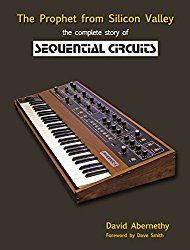
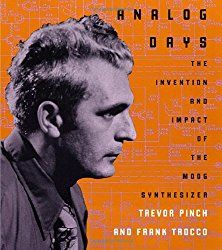
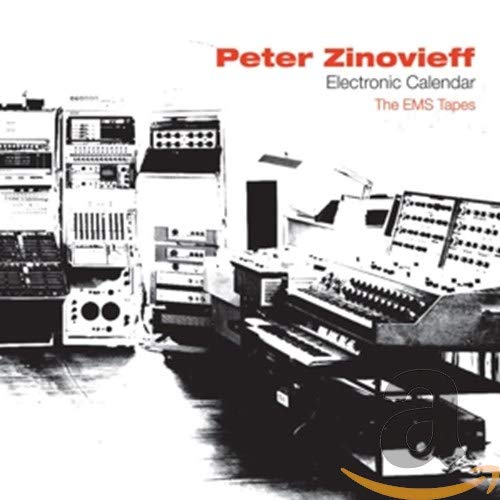
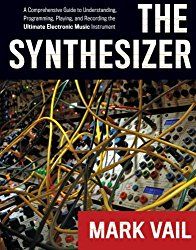
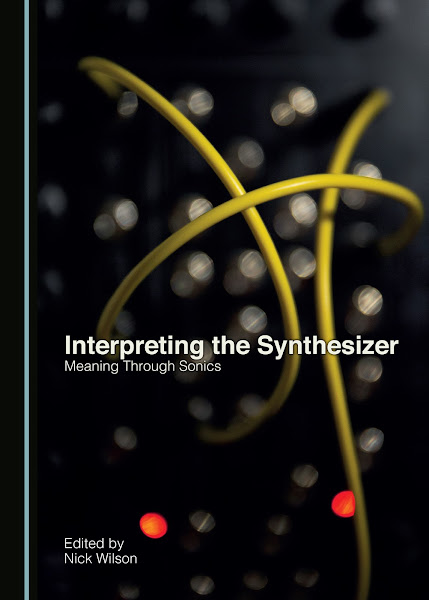
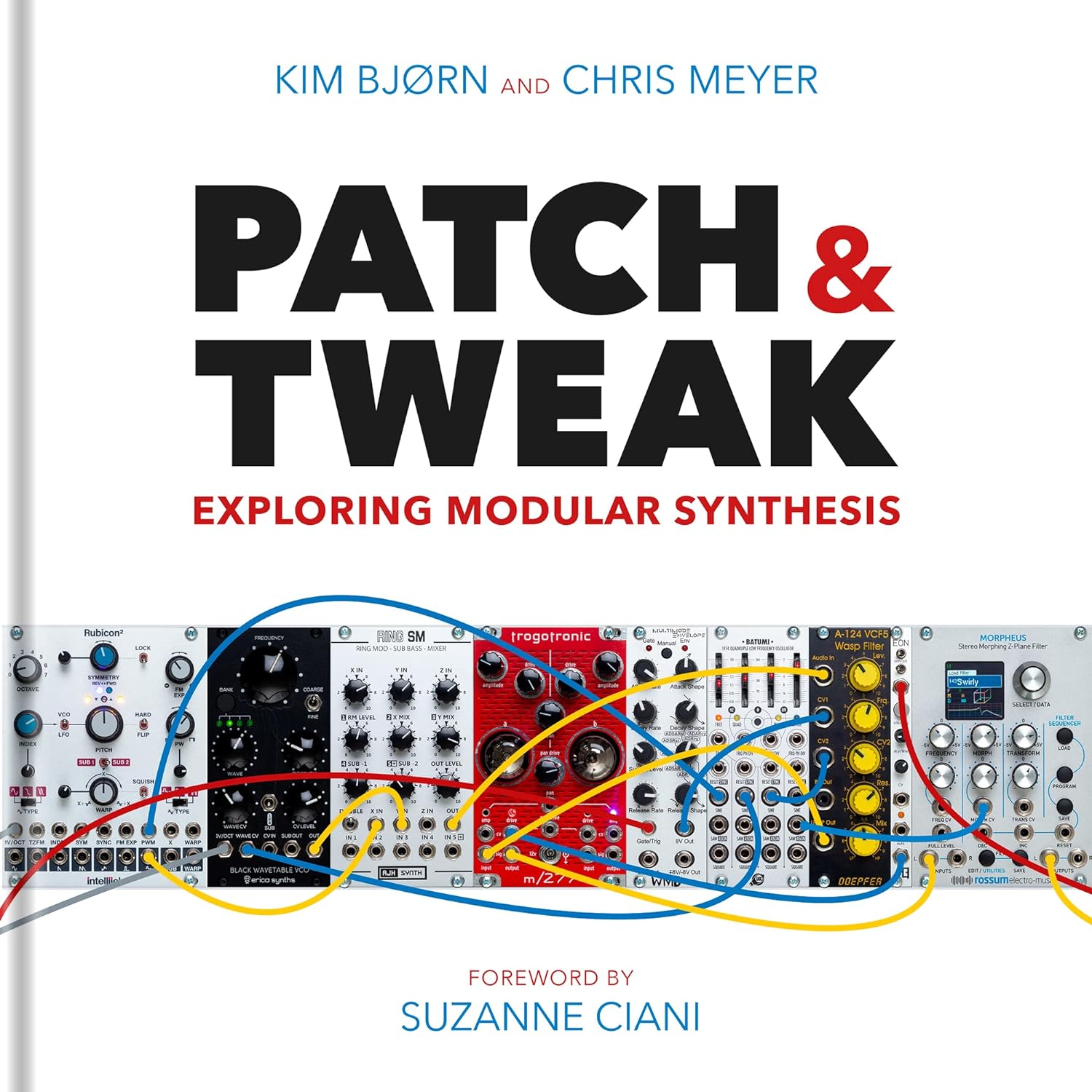
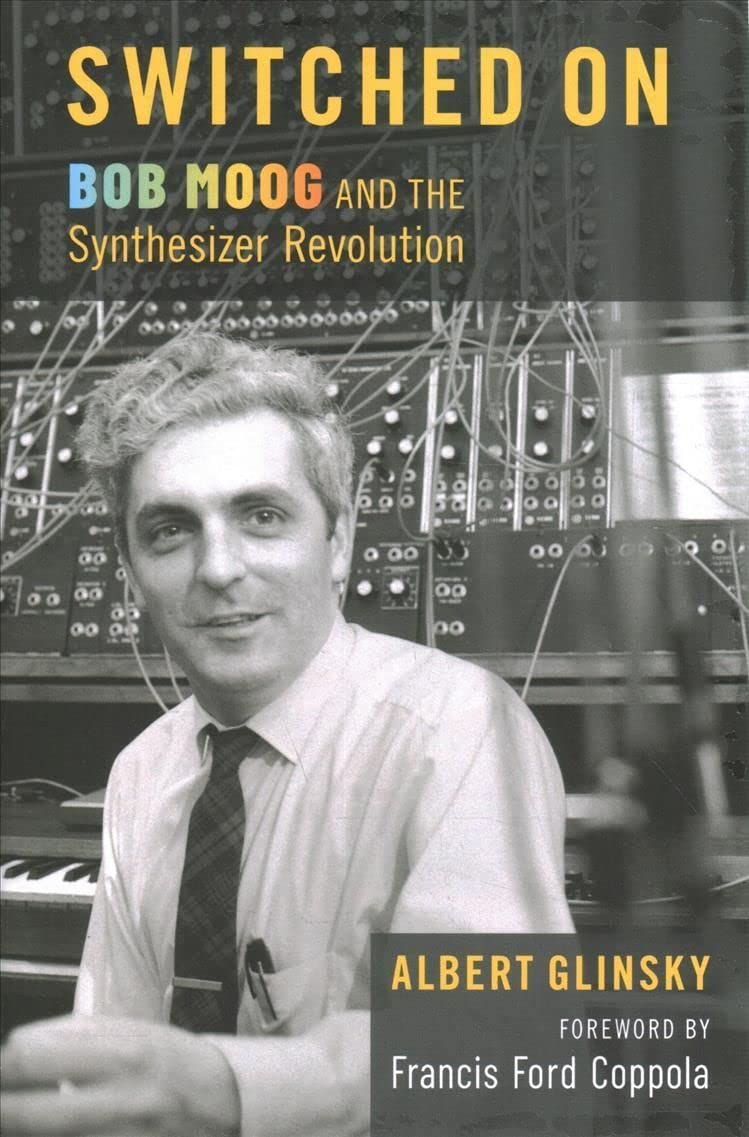
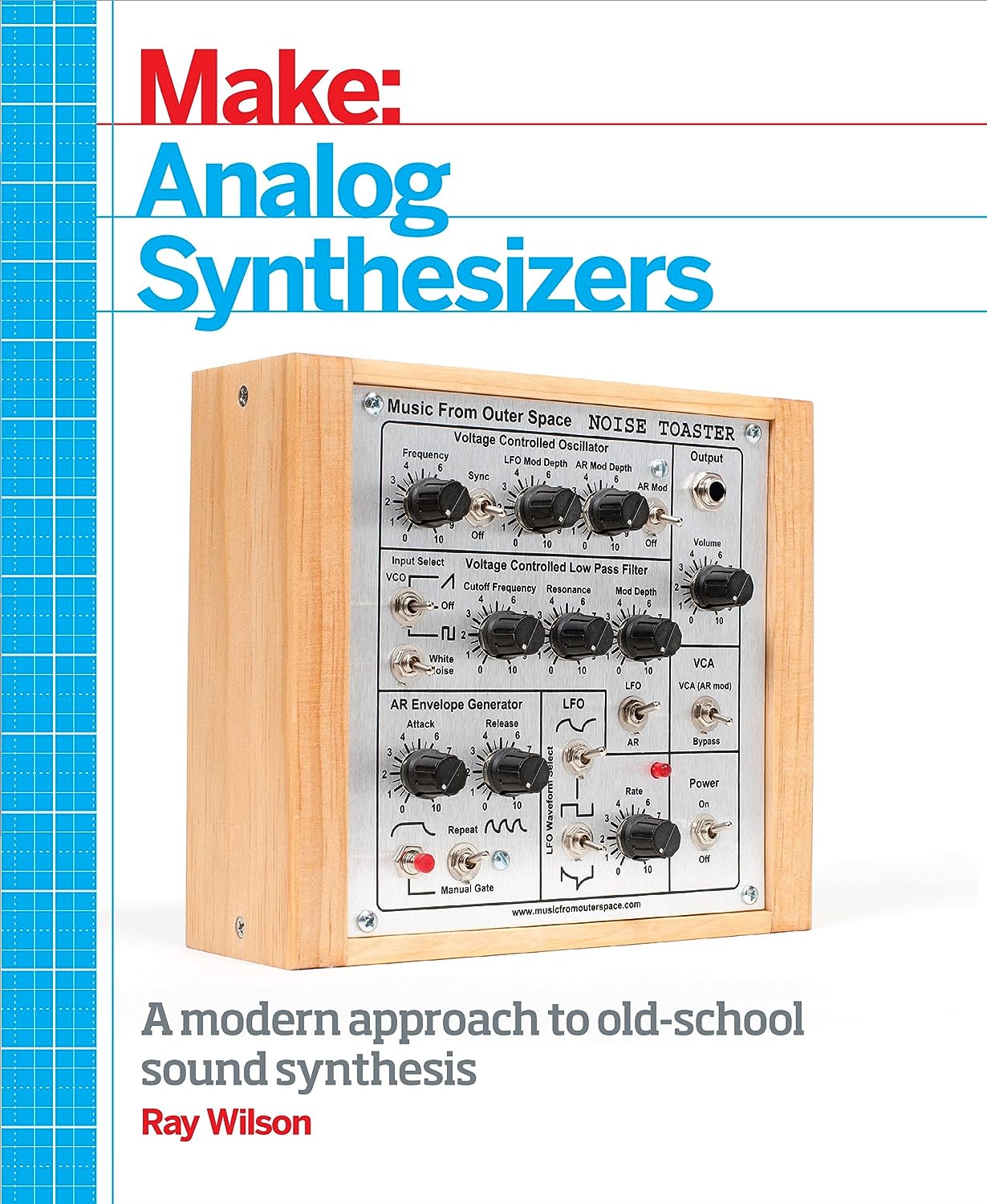
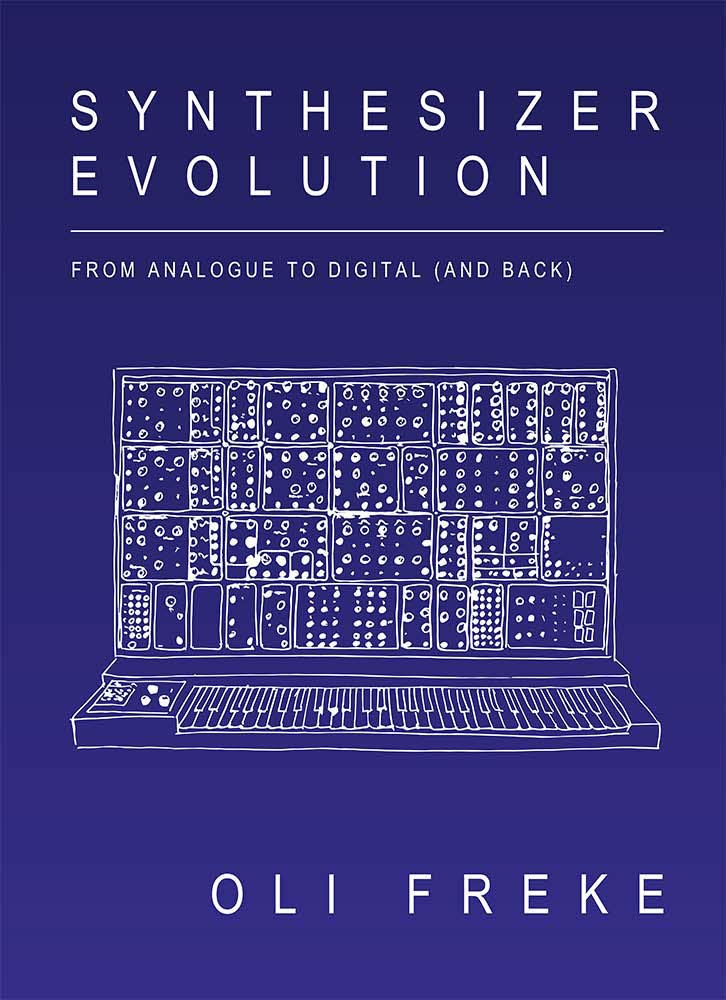
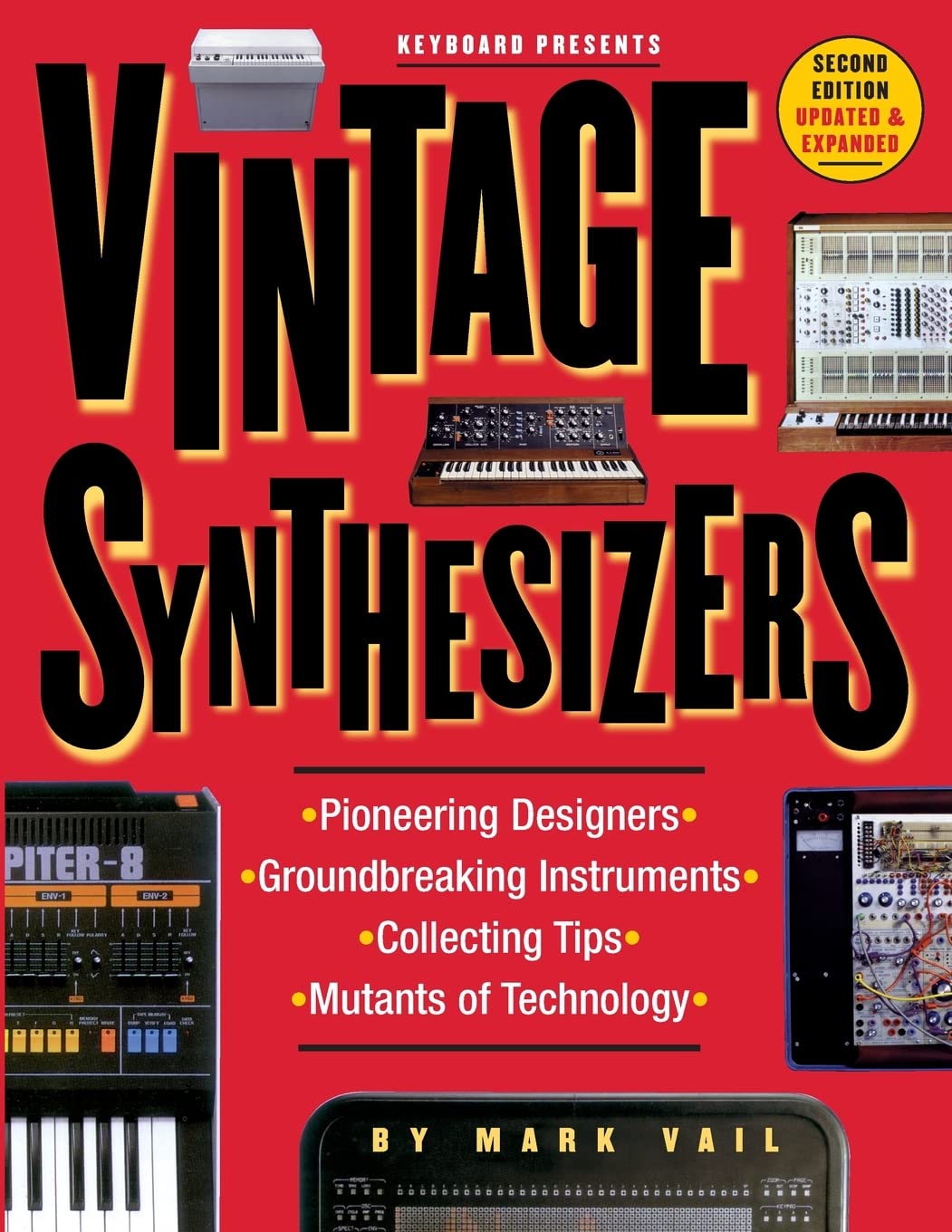
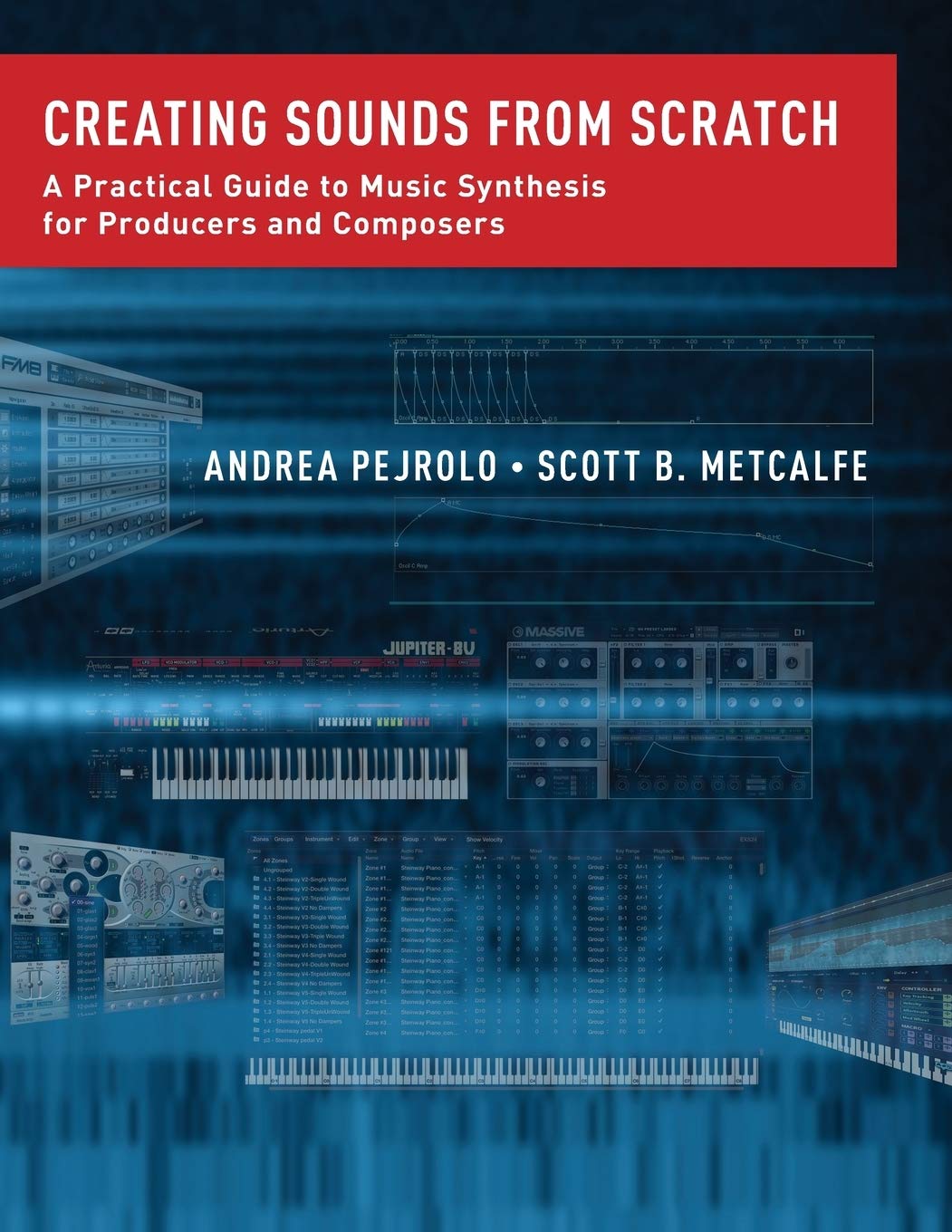
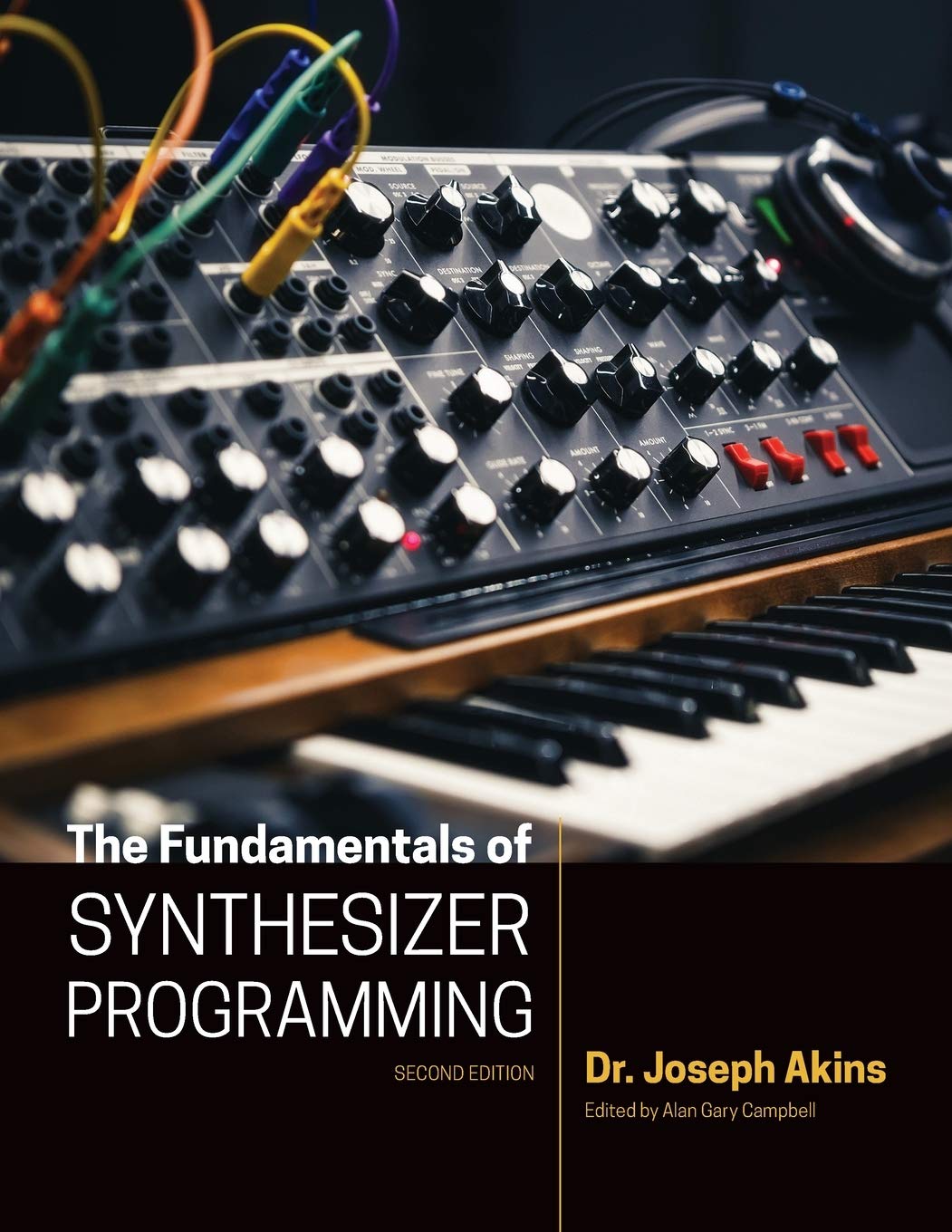

© Matrixsynth - All posts are presented here for informative, historical and educative purposes as applicable within fair use.
MATRIXSYNTH is supported by affiliate links that use cookies to track clickthroughs and sales. See the privacy policy for details.
MATRIXSYNTH - EVERYTHING SYNTH













© Matrixsynth - All posts are presented here for informative, historical and educative purposes as applicable within fair use.
MATRIXSYNTH is supported by affiliate links that use cookies to track clickthroughs and sales. See the privacy policy for details.
MATRIXSYNTH - EVERYTHING SYNTH































